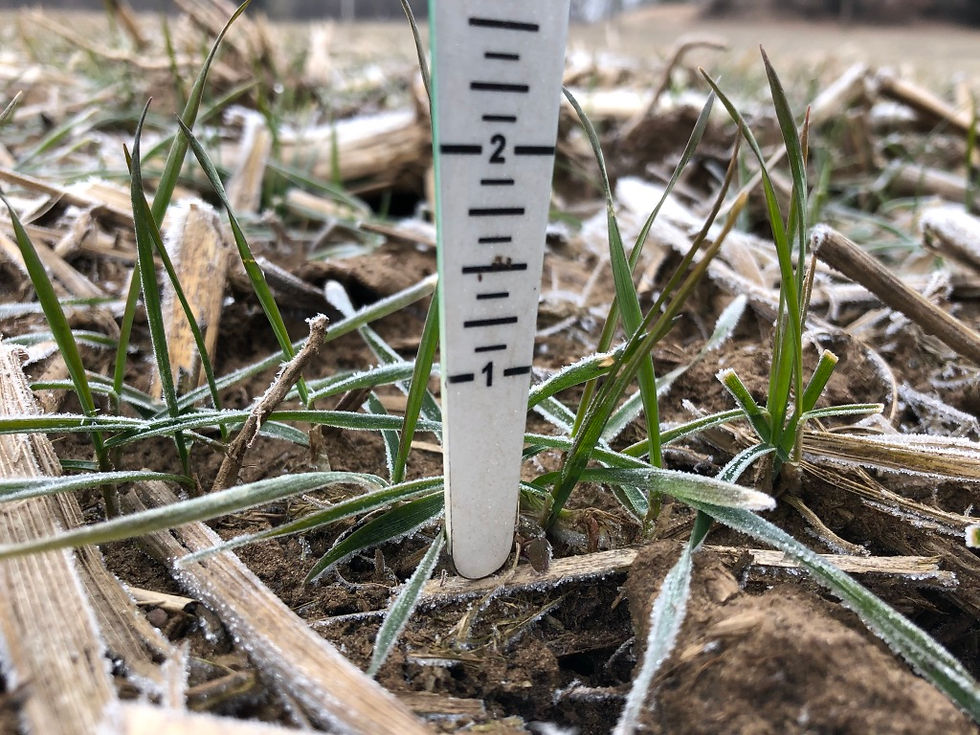I wanted to touch base on some thoughts for scouting wheat when the snow melts and the ground firms up. We have had an unusually long winter with excess snow, cold, and moisture. In spite of the late fall and other setbacks, we want to go back to the basics. This will help us focus on what we can do, instead of the items that are out of our control.
A reminder on what makes wheat yield:
-Plants/acre
-Heads/plant
-Seeds/head
-Weight/seed

So, with this in mind let’s start checking off our list what we have and then go to what we can do from here:
-Plants/acre We can not do anything about this now, but observation will help us determine our yield potential from here. For top potential we should see 22-25 viable plants/sq foot. If we have less than 20 good yields are still possible but the 100% potential has come off. This number will help us decide how much should we spend on Fungicides, etc.
-Heads/plant Ideally, we want to see by joint 3-4 tillers per plant. Due to the late fall, which was the best time for tillering, we probably only have 2. The main shoot and a tiller. If this fits your situation, as soon as it is dry enough or firm enough to go over the ground, we should front load 40-0-0-12 units of N and Sulfur to boost tillering before joint stage. If you have 3-4 tillers already and have good fall growth you may want to hold off on N if the N is sufficient for now. We would like to see around 80-100 heads/sq foot as we head towards joint.
Seeds/head & Weight/seed As we get to the joint stage we will want to apply the rest of the N for the grain fill. Also, we need to be looking at fungicides. Here is an article from K State: In general, the largest reductions in disease severity and greatest increases in wheat yield or grain quality occur when fungicides are applied between full extension of the flag leaves and anthesis (when the male flower parts have just begin to emerge). Applications intended for the management of glume blotch or head scab should be made between the beginning of anthesis and and 50 percent flowering. and here is an excerpt from David Hughes on managing this cost efficiently: If we are concerned about:
preventing and suppressing Fusarium head blight while having to deal with an early Stripe Rust infection. Because wheat is a “low margin” crop, many farmers did not want to apply fungicide twice to combat these infections. Farmers who applied a lower labeled rate of a preventative fungicide (ex. 2 to 4 oz. of Priaxor®) during stem elongation and before flag leaf emergence (about Feekes 6.5), were able to hold off the Stripe Rust. They were then able to suppress the Fusarium head blight with an application of Caramba, Proline, or Prosaro at flowering.
Do not use a single action strobilurin fungicide for Fusarium head blight as it has been shown to actually increase the toxin levels in the infected wheat.
If you need anything like assistance with scouting or input to help make a decision let me know.

